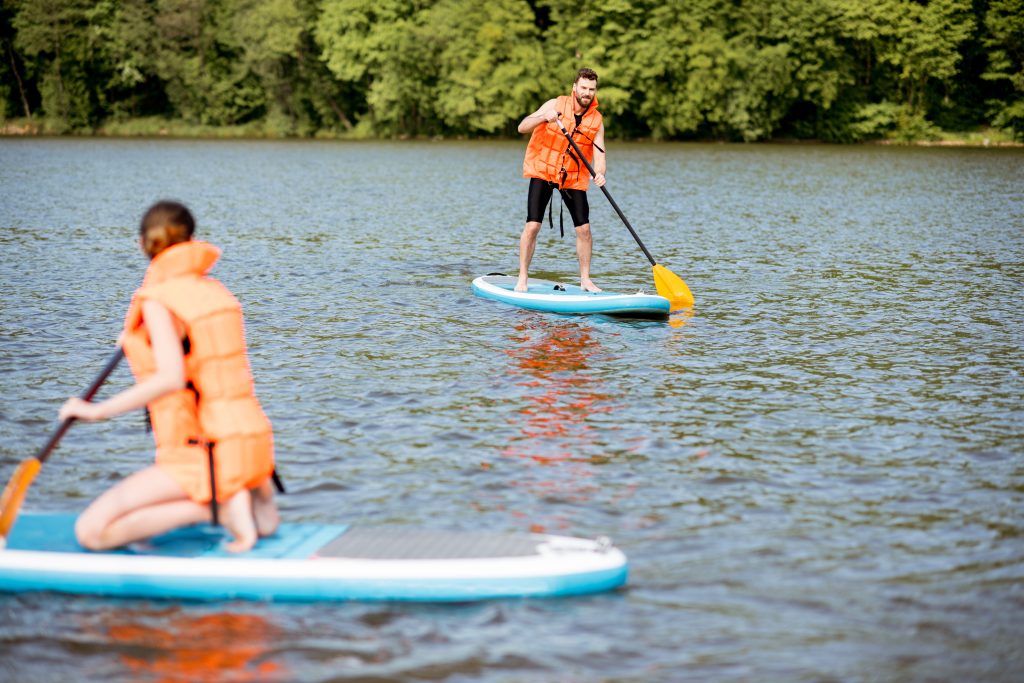- Home
- Start your Paddling Journey
- Getting Started: Stand Up Paddleboarding
Getting Started: Stand Up Paddleboarding

Welcome to the exciting world of Stand Up Paddleboarding (SUP)! Whether you’re drawn to the tranquility of gliding across calm waters or seeking an exhilarating adventure, SUP offers a fantastic way to explore and connect with nature. This beginner’s guide will help you get started on your SUP journey with confidence and enjoyment.
What is Stand Up Paddleboarding?
Welcome to the exciting world of Stand Up Paddleboarding (SUP)! Whether you’re drawn to the tranquility of gliding across calm waters or seeking an exhilarating adventure, SUP offers a fantastic way to explore and connect with nature. This beginner’s guide will help you get started on your SUP journey with confidence and enjoyment.
Choosing the Right Equipment:
Before hitting the water, it’s important to choose the right equipment for your SUP adventure. Here are the key components to consider, maybe event consider renting a paddleboard first:
Paddleboard: Select a board that suits your skill level, body weight, and intended use. Longer and wider boards provide stability, making them ideal for beginners. Inflatable boards offer portability and easy storage, while rigid boards offer enhanced performance.
Paddle: Opt for an adjustable paddle that can be customized to your height. A good paddle should be lightweight, durable, and comfortable to grip.
Buoyancy Aid: It’s recommended to always wear a Buoyancy Aid, for your safety, especially if you’re a beginner or paddling in unfamiliar waters.
Leash: Most paddleboards come with a leash to attach to your ankle. This prevents the board from drifting away in case of a fall.
Basic SUP Techniques:
Here are some fundamental techniques to get you started on your SUP journey:
Getting On the Board: Begin in calm, shallow water. Place the board parallel to the shore and kneel in the center. Gradually stand up, one foot at a time, maintaining a wide stance with your feet shoulder-width apart.
Paddling Stance: Adopt a relaxed and slightly bent-knee stance with your feet parallel and centered on the board. Keep your gaze forward, and engage your core for stability.
Paddle Grip and Stroke: Hold the paddle with one hand on the top of the handle and the other hand lower down the shaft. Start with the paddle in front of you and use your core, shoulders, and arms to execute a smooth stroke. Ensure the blade is fully immersed in the water, and alternate strokes on each side of the board.
Turning: To turn, paddle on one side of the board, using more strokes on that side. For a sharper turn, drag the paddle behind you on the opposite side while maintaining your balance.

Safety Considerations:
Prioritizing safety is essential for an enjoyable SUP experience. Here are some safety tips to keep in mind:
Start in calm, flat waters with minimal boat traffic.
Learn about weather conditions, including wind and tides, before paddling.
Always wear your buoyancy aid and use a leash to stay connected to your board.
Stay hydrated, protect yourself from the sun, and dress appropriately for the water temperature.
Be mindful of your surroundings, including other water users, obstacles, and wildlife.
Learn basic water rescue techniques and how to self-rescue in case of an accidental fall.
And remember you’ll always rather be on the side wishing you were in the water, than in the water wishing you were on the side!
Finding somewhere to SUP
Luckily here at Paddle Spot we’ve got a list of the best places to Paddle, with a great search tool enabling you to filter by on site amenities.

